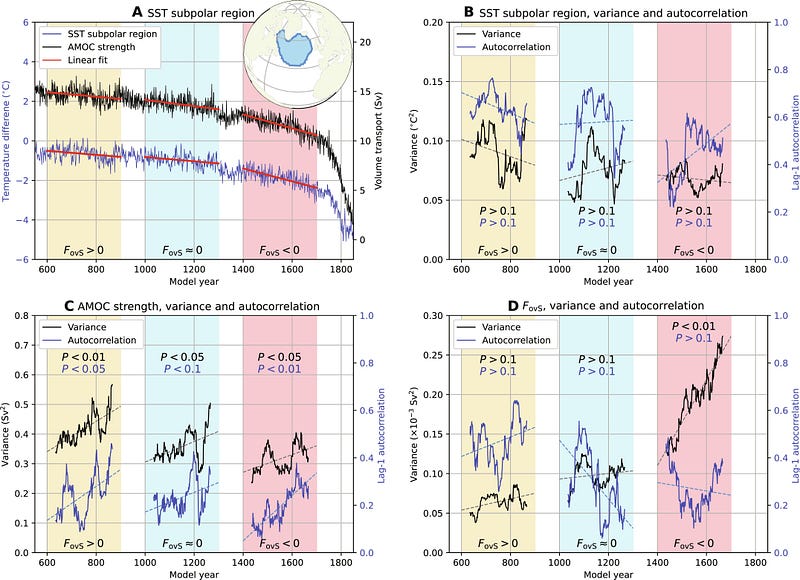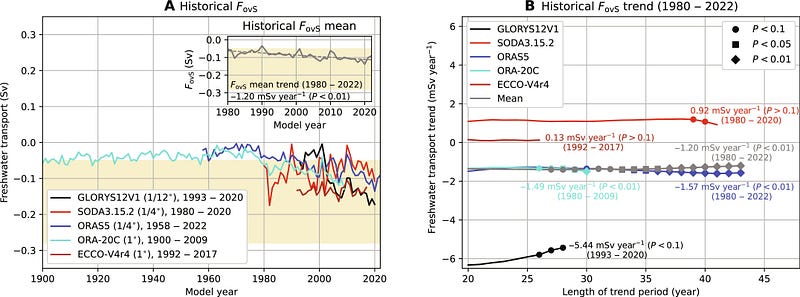The Atlantic Meridional Overturning Circulation: A Climate Alarm
Written on
Understanding the AMOC's Role in Climate Dynamics
Recent observations have prompted scientists to keep a close eye on the Atlantic Meridional Overturning Circulation (AMOC), an essential element of the Earth's climatic framework. A significant study has unveiled a new early warning signal indicating that the AMOC may be approaching a critical tipping point. This discovery carries profound implications for climate stability and has ignited considerable interest among researchers in the field.
What Exactly is the AMOC?
The AMOC functions like a colossal oceanic conveyor belt, transferring warm surface waters from tropical regions to the North Atlantic, where they release both heat and moisture into the atmosphere. As these warm waters cool, they descend and flow southward below the surface, completing the circulatory process. This mechanism is vital for regulating global climate patterns, influencing temperature distribution, weather phenomena, and sea-level changes.
Recent Research: A Physics-Driven Early Warning Signal
The recent investigation, spearheaded by researchers René M. van Westen, Michael Kliphuis, and Henk A. Dijkstra, delves into the AMOC's susceptibility to freshwater influx in the North Atlantic. Utilizing the Community Earth System Model (CESM), an advanced Global Climate Model (GCM), the team simulated a potential AMOC tipping event and analyzed its ramifications.
Here are the main findings:
- AMOC Tipping Event: This study marks the first detection of an AMOC tipping point within a GCM. It occurs when freshwater input disrupts the delicate equilibrium between warm and cold currents, which may lead to a sudden breakdown of the AMOC.
- Climate Consequences: The resulting AMOC failure could have extensive climatic repercussions. Changes in ocean circulation might affect weather patterns, sea surface temperatures, and marine ecosystems. For instance, a weakened AMOC could result in harsher winters in Europe, shifted precipitation patterns, and disturbances in marine life.
- New Early Warning Indicator: The researchers have introduced a novel indicator for AMOC tipping: the minimum of AMOC-induced freshwater transport at the Atlantic's southern boundary. This physics-based metric offers a dependable means to monitor the AMOC's stability and gauge its vulnerability.


Implications for Climate Action
The findings from this study highlight several urgent considerations:
- Tipping Point Awareness: The AMOC's closeness to a tipping point emphasizes the need for immediate climate action. A collapse of the AMOC could initiate a series of feedback mechanisms, worsening global warming.
- Strengthened Evidence: This study’s physics-based methodology bolsters the understanding of AMOC's vulnerability. Unlike statistical models, this new indicator accurately reflects the fundamental physics governing ocean circulation.
- Scientific and Public Response: The global scientific community is closely tracking these developments. The implications stretch beyond academic circles, affecting policymakers, environmental advocates, and the public as they confront potential future scenarios.
The second video, "IS THE ATLANTIC OVERTURNING CIRCULATION APPROACHING A TIPPING POINT?", discusses the potential risks associated with the AMOC and its implications for climate stability.